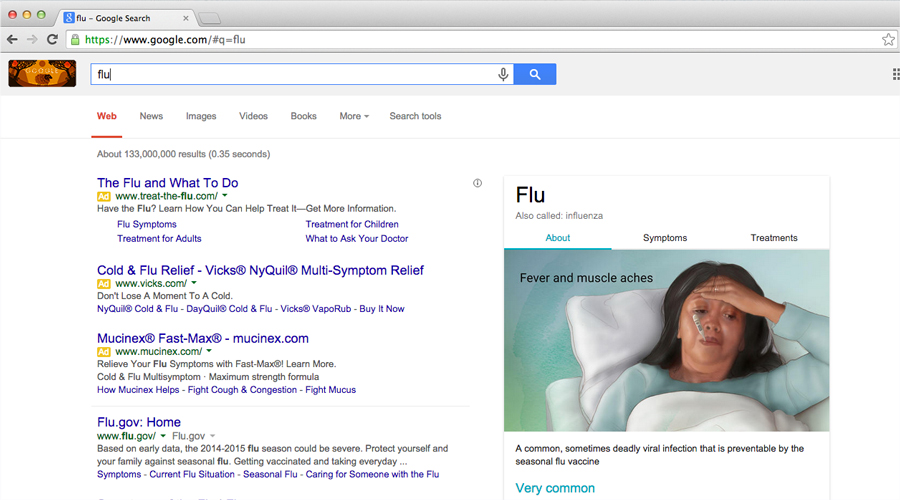Are your patients cyberchondriacs?
Seventy-two percent of Internet users search online for health information, and 35 percent specifically look online to diagnose a medical condition, according to Pew Research Center. Frequently, patients come away from an online search more anxious than they were before about their symptoms. This is known as cyberchondria.
Cyberchondria is only increasing. It’s more common than ever for patients to turn to the Internet for information about their symptoms before going to their doctor—or their pharmacist. In fact, one in 20 Google searches are health-related.
While the Internet can often be a useful resource, it’s also full of unreliable health information that can scare patients into believing the worst about their symptoms. Even the news is filled with stories about health that range from accurate and important to completely bogus. Overstated study results are also common. A good example is headlines in 2014 that claimed drinking wine has more health benefits than exercising.
It’s important to make sure your patients are making health decisions based on accurate information, and not claims from an unreliable website. Here’s how you can help your patients find trustworthy health information online.
Educate patients on what’s reliable
When searching for health information online, it’s important to be able to distinguish between what’s reliable and what’s not. Advise your patients to stick with websites sponsored by the U.S. government, nonprofit health organizations or university medical centers, and to avoid websites such as WebMD, which is sponsored by pharmaceutical companies, among others. You can do this by placing a sign on your pharmacy counter with online searching tips or putting a flyer in patients’ prescription bags.
Now, it’s even easier to find reliable health information right from the start. Google announced in a blog post on Feb. 10, 2015, that it’s partnering with the Mayo Clinic to compile accurate, physician-reviewed health information to present at the top of Google searches.
A search about a common condition, such as the flu, will result in a sidebar, which uses a Knowledge Graph to connect searches to information with facts about the illness, how it spreads, symptoms, treatments and more. You’ll be able to see the sources of the information, which is verified by 11.1 physicians, on average. This new method of presenting health information will also be strongly featured in Google’s mobile app.
Google asserts that this new method of presenting health information isn’t intended to provide medical advice. Each sidebar will advise the reader to consult a doctor, and you should remind your patients that they should only look to the Internet for information, not a diagnosis.
Share information on social media
As a pharmacist, you’re one of the best resources your patients have for health information. Help them find reliable information online by providing it yourself. Recommend that your patients follow your pharmacy on social media, and make a commitment to providing accurate information on a regular basis.
During cough, cold and flu season, share tips on how to stay healthy. If you come across a reliable and relevant health article, share it with your followers on social media. You could even start a blog as a way to share more in-depth information with your patients via the Internet.
Encourage patients to share with you
The best way for your patients to use the information they find online is to discuss it with you or their doctor. You can help them sort through the information, find what’s reliable and assuage their concerns about what they’ve found. Unlike the Internet, you can start a dialogue and give advice, or refer them to a physician for more information. Be open and available so your patients know you’re always there to help. You could even put up a sign or wear buttons that encourage patients to ask you questions.
Point your patients to reliable health information online, and help them make the best health decisions for themselves and their families.












